Greece and the Black Sea
September 9 through September 30, 2013
After a near approach to Sochi, Russia, the ms Nautica executed a left turn and spent a day sailing toward Yalta on the Crimean Peninsula of the Ukraine. | |
| The
Yalta waterfront looked like a very welcoming port. This was just
less than 6 months before Crimea was joined to the Russian Federation.
Our recollection of the Crimean ports-of-call contrasts with the chaos of
March 2014. | |
| There are about 20 Alexander Nevsky Cathedrals around the world, including two in the United States and one in Jerusalem. This one is in Yalta, of course. It stands in bright relief against the wooded hills of this resort town. Nevsky himself was a prince and brilliant military leader in 13th century Russia, and he was pronounced a saint of the Eastern Orthodox Church in 1547. | 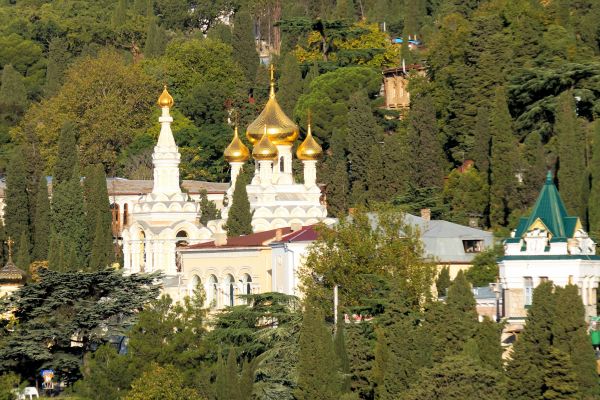 |
| Most of us of a certain age remember Yalta mainly for the conference there in February 1945. That was a summit among the WW2 allies where much of the course of postwar Europe was laid out. The Livadia Palace was the site of the conference, and it was also the residence for FDR and his staff during the conference. | 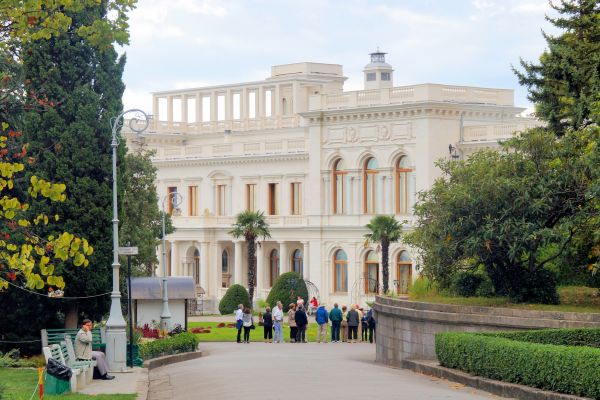 |
| This stone plaque decorates the doorway we entered. A struggle with Cyrillic will lead you to see Winston Churchill on the bottom line, Franklin D. Roosevelt on the fourth line up, and N. B. Stalin two lines above Roosevelt. (N is not correct, of course. Backwards it sounds like a short "i.") | 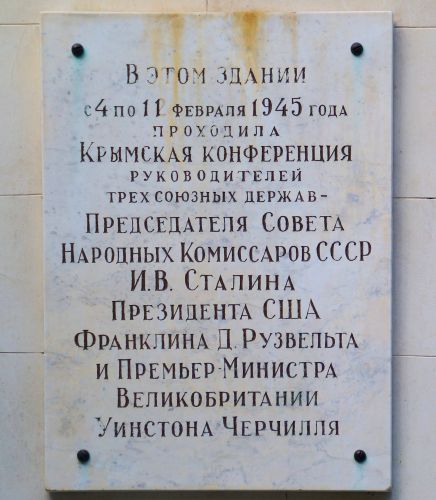 |
| While a large ballroom was used for the ceremonial meetings, the heavy lifting was done in this room, reconstructed to its state in 1945. | 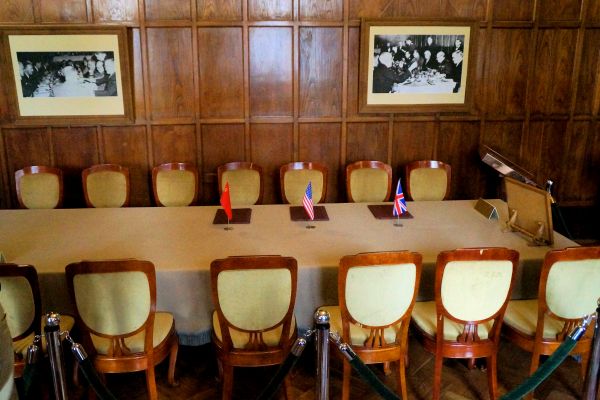 |
| Livadia was a resort for the czar and his family from 1860 or so, but this large palace was built in 1910 and 1911. After the Revolution, it had a variety of fortunes. Besides hosting the Yalta Conference, it has also been an mental institution. Its historical role was recognized in 2007 and it was restored in 2008, and now it is a historical museum and a site for international meetings. | 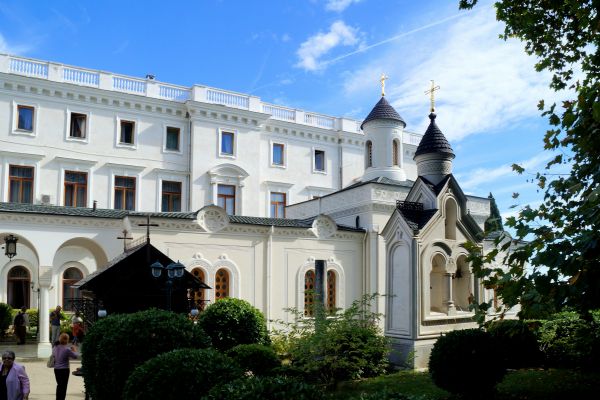 |
| The symbol of Yalta as a Black Sea resort has been the Swallow's Nest Palace. This is a folly, constructed in 1912 by a Baltic German oil baron, bearing more resemblance to Neuschwanstein than to any defensive structures. It is small, having a footprint of about 2000 square feet, and two bed rooms in the tower. It has been a restaurant off and on, a reading club, and maybe even a love nest. Earthquake damage closed the Swallow's Nest for 40 years. (It is obvious that I could have had better light for this picture.) | 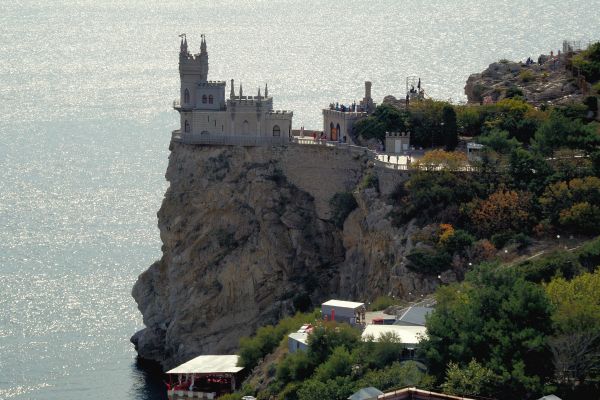 |
| Vorontsov Palace was used by Churchill in 1945. In this view it looks very British. It was built between 1828 and 1848 by Prince Vorontsov as a summer house, using a mish mash of styles, including Scottish Baronial. | 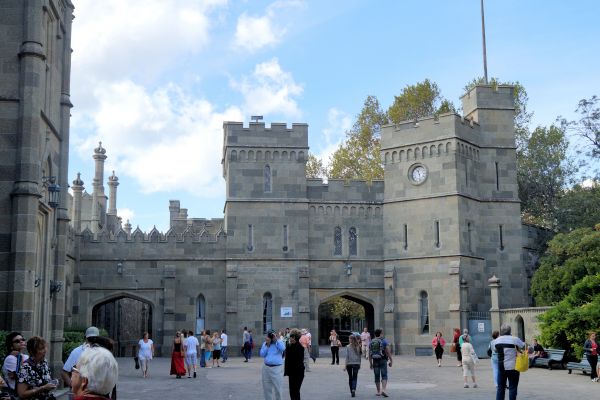 |
| Moorish touches abound in this palace, including this arch overlooking the Black Sea. You wouldn't believe that this was the work of "boring" British architect, Edward Blore. | 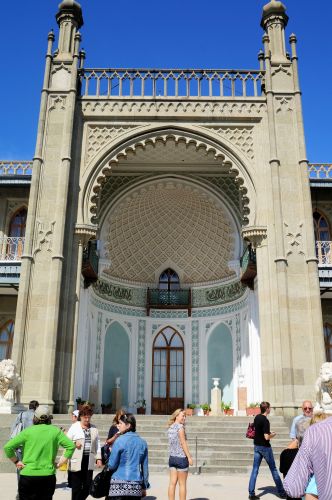 |
| Churchill must have found this lion as familiar as the crags of the Crimean mountains are unfamiliar. | 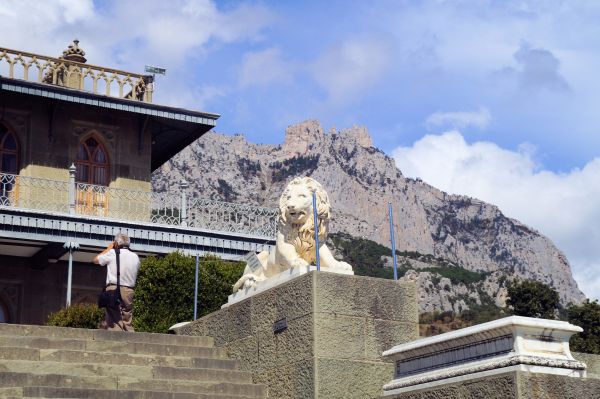 |
| While many of our ship's tours while in the port of Sevastopol concentrated on the Charge of the Light Brigade, we headed for the village of Bakhchisaray. This is a restaurant on the outskirts of that village, but we didn't sample its cuisine. | 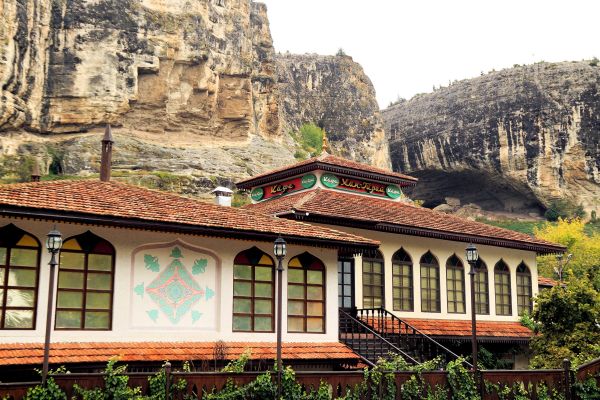 |
| Our focus was first the Uspensky (Assumption) Cave Monastery. Its origins are misty, either the 8th century or the 15th century. We do know it was closed by the Soviets in 1921, and it was reopened in 1992. This flight of stairs takes you half way up to the cave chapel. | 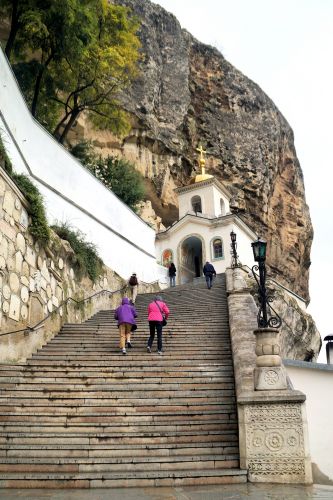 |
| Everywhere up here there were signs in English saying "No Photography," but who could resist? | 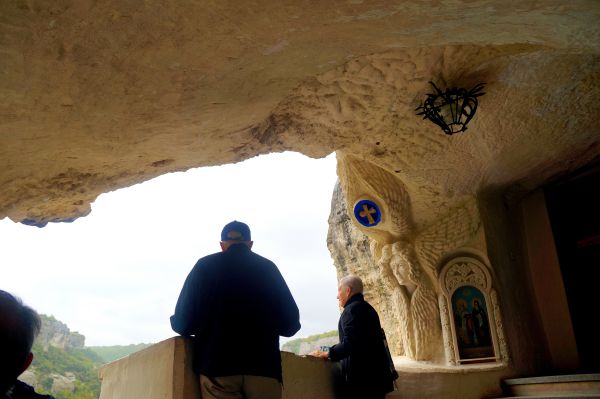 |
| The Kahn's Palace is in the center of Bakhchisaray. From 1530 until 1783, this palace was the center of authority for the Crimean Tatars. This is a Turkic ethnic group that once dominated the Crimean population. In 1944, Stalin deported them in mass to Siberia. Their return was allowed in the 1980's. Today, they number about a quarter million, and they are collectively concerned about Crimea's return to Russia. | 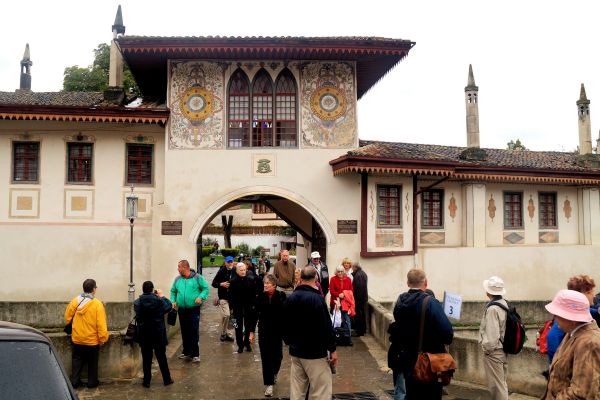 |
| Without a Khan, the palace is effectively a museum, although the mosque is still active. There are administrative offices here, too. | 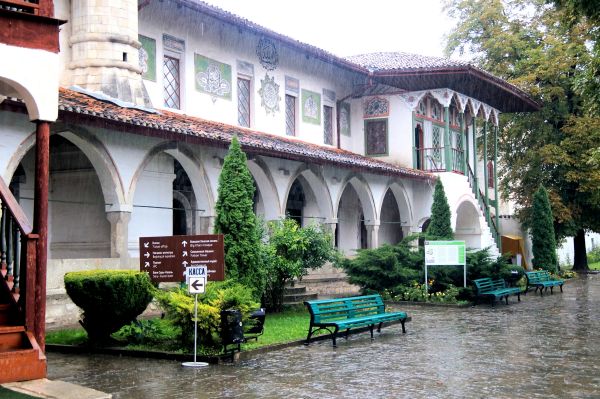 |
| And the scale is small. This is the Kahn's reception hall. | 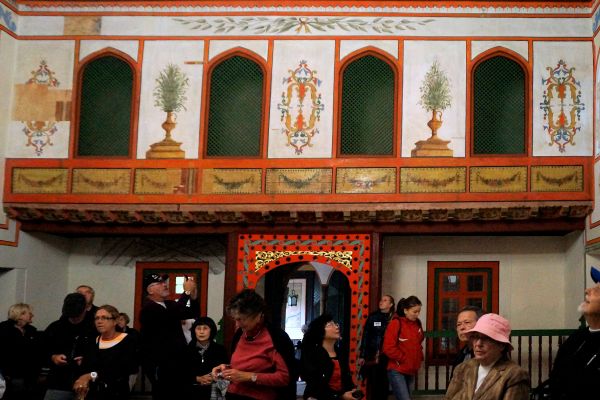 |
This view of the Port of Sevastopol is just the mouth of Pivdenna Bay, which extends back for miles, providing a very rich and well protected port on the Black Sea. At the time this was taken, this was the Russian Navy's warm-water port by virtue of a long term lease arrangement with the Ukraine. It is still Russia's warm-water port, but the lessee has now taken possession. | |
| I thought the flag of the Russian Federation, here flying over the Naval Headquarters, was novel. I should have looked for more views of the Ukraine flag. | 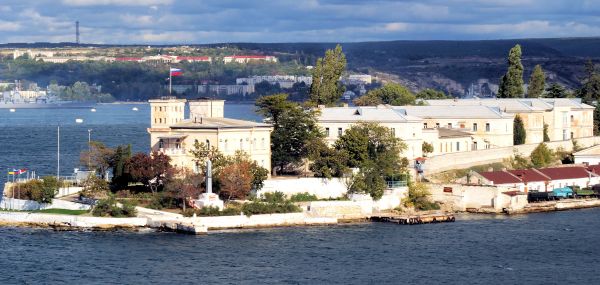 |
| This structure houses the Russian intelligence operations in Sevastopol. | 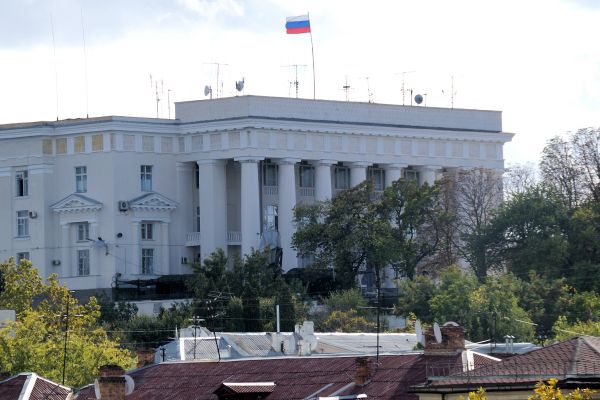 |
| No flag was visible on this ship, but I believe that it is a Russian destroyer sailing out of the Sevastopol harbor. I did not get my camera up in time to capture an image of a Russian submarine, docked a bit farther up the bay. | 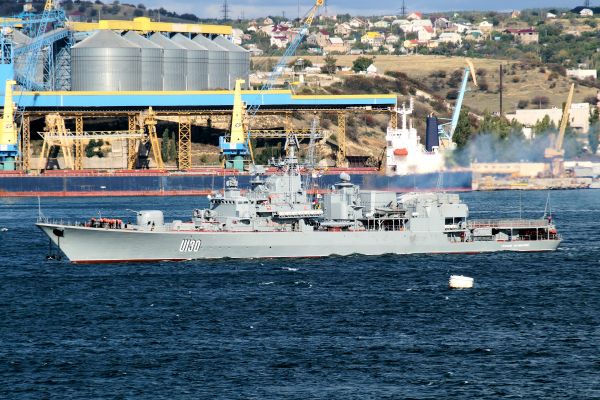 |
| The Odessa National Theater of Opera and Ballet is appropriately located at 1 Tchaikovsky St. This building was erected in 1887, replacing an 1810 theater that had been destroyed by fire. This one burned, too, but it was only slightly damaged in WW2. Unfortunately, remodeling continues because there is subsidence of the foundations. We missed going inside. Our tour guide was too proper. | 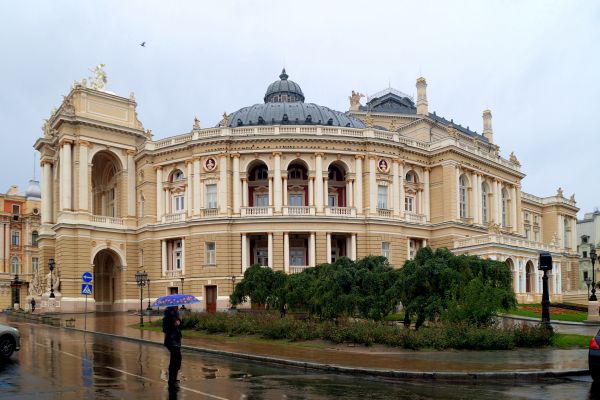 |
| A sign of the new Ukraine: This is the Odessa Stock Exchange. | 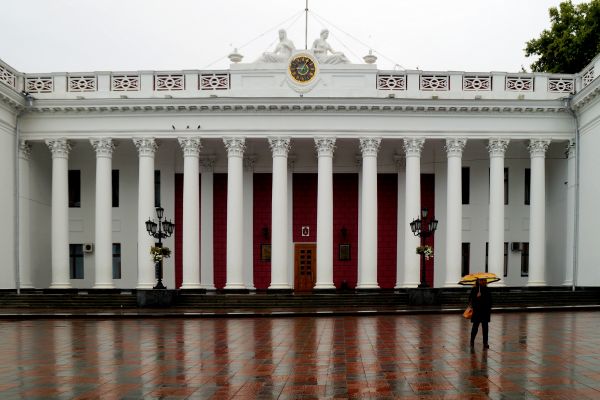 |
| There were a multitude of places where Odessa made me think of Paris, like here. However, Katherine the Great would not be so prominent in Paris. Disregarding previous Greek, Tatar, Lithuanian and Ottoman settlements here, Odessa was founded by a decree of Katherine the Great in 1794. | 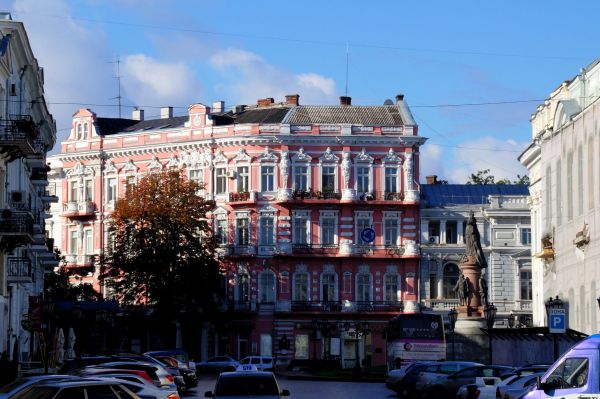 |
| Just
as there is a monument to the Crimean War dead on the Turkish side of
the Black Sea, there is a monument to the Russian sailors who died on
this side of the Black Sea. This monument, dedicated to the
unknowns, has a continuous honor guard of middle-school students. | 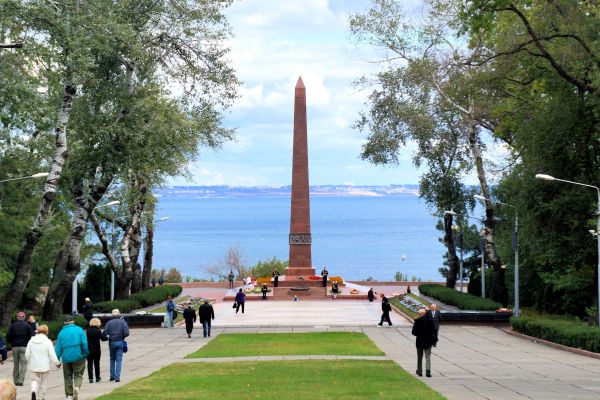 |
| These
steps, connecting the city of Odessa with the waterfront have become
known as the Potemkin Steps because Sergei Eisenstein placed a bloody
battle here in his film The Battleship Potemkin.
In real history, the battle took place on the streets above the
steps, but you couldn't have a baby carriage rolling out of control up
there. | 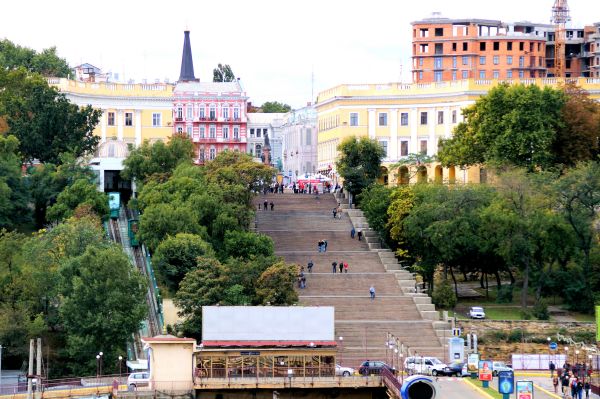 |
 Our Black Sea port-of-call in Romania was Constanta. That is the oldest continuously populated city in Romania, dating to about 600 BC. It is also the largest port on the Black Sea, surpassing Odessa and Sevastopol. It also looked boring as a tourist destination, so we took a 3-hour coach ride to Bucharest. The largest building in Bucharest is the Palace of the Parliament. This building was started by Nicolae Ceausescu in the early 1980's. Much of the historic center of Bucharest was razed, and a million laborers were employed to build this 3.75 million sq. ft. structure. It is approached by a boulevard intentionally made 1 meter wider than the Champs Elysees. The architectural inspiration is controversial. Some of the 2000 architects say "Buckingham Palace," but others say Pyongyang. This is Communist architecture, in my eyes. Now it houses most of the government of Romania and a museum. | |
| My favorite stop in Bucharest was the Gusti National Village Museum, an open air museum featuring 272 examples of ethnic Romanian architecture. This is the exterior of one of several churches in the collection. | 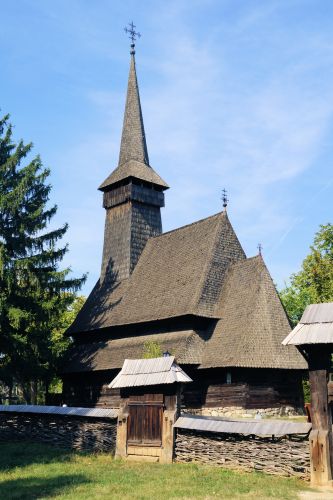 |
| This is the interior of the same church. We could easily have spent an extra hour here, but when the bus leaves we leave, too. | 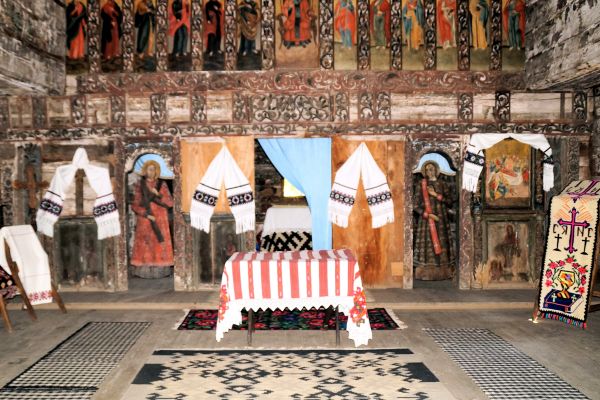 |
| Instead of more time at the museum, we had a mass lunch with "traditional Romanian entertainment." Legs notwithstanding, the museum was better than both. (Tips were solicited, incidentally.) | 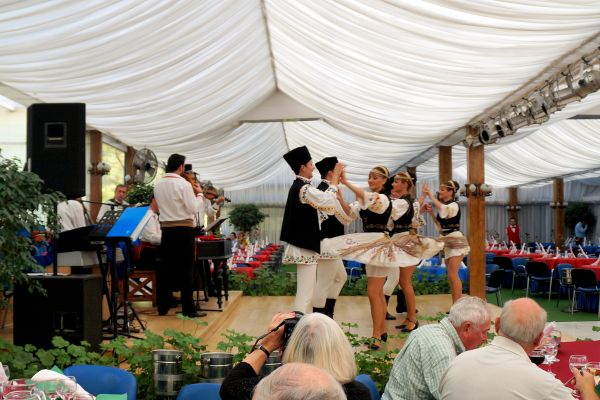 |
| As the principal city of Romania, Bucharest is studded with monumental structures, and many were more attractive than the Palace of Parliament. This is the Romanian Atheneum, the national concert hall that is used by the George Enescu Philharmonic Orchestra. The structure was inaugurated in 1888, but significant renovation since 1992 has saved it from collapse. | 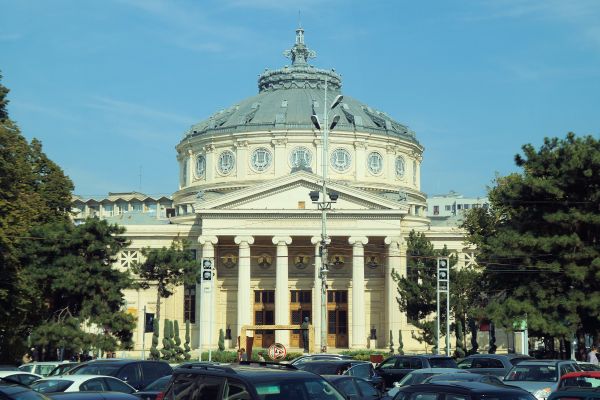 |
| Since the Orthodox Church is organized according national boundaries, it makes sense that the Patriarch of Romania would have his seat in Bucharest. This is the Orthodox Cathedral of the Romanian Patriarch, and it was completed in 1658. It is actually very small, but as illustrated below, very spectacular. | 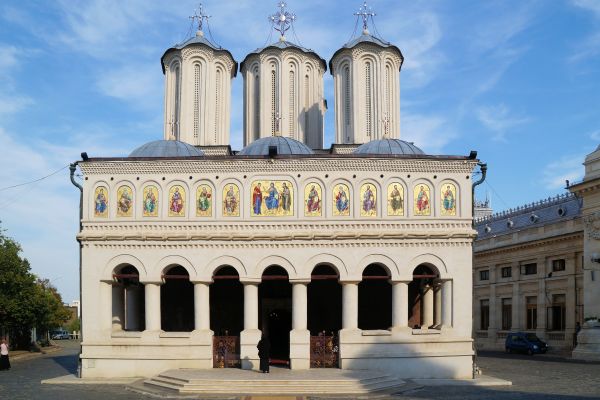 |
| In every Orthodox Church, the iconostasis is invariably a highlight. Unfortunately, I have not been able to dig up any history on this feature of the Patriarchal Cathedral. | 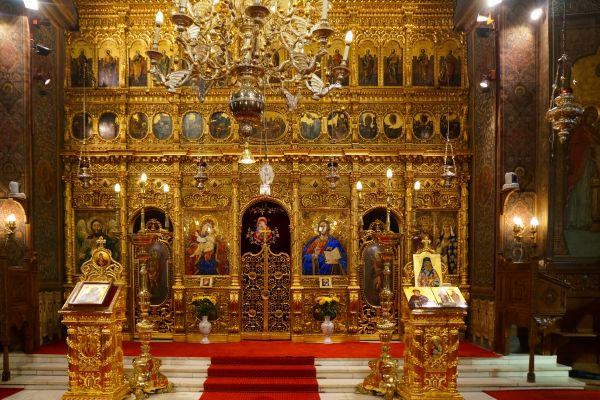 |
| I have mentioned the tower decorations in Orthodox churches, and here we have a Madonna and Child at the pinnacle. | 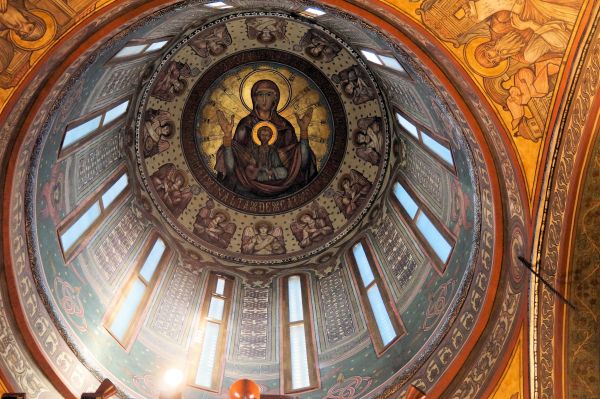 |
 Nesebar was our stop in Bulgaria. This was a Thracian town 3000 years ago, and it has had a long and varied history. This little spit is called the Bulgaria's Dubrovnik, and it is a UNESCO World Heritage site. It is not a big city, only about 11,000 residents. | |
| Actually, there seem to be two Nesebars. Just to the south of the ancient village, there is a row of high-rise hotels that define Nesebar as a resort on the Black Sea. | 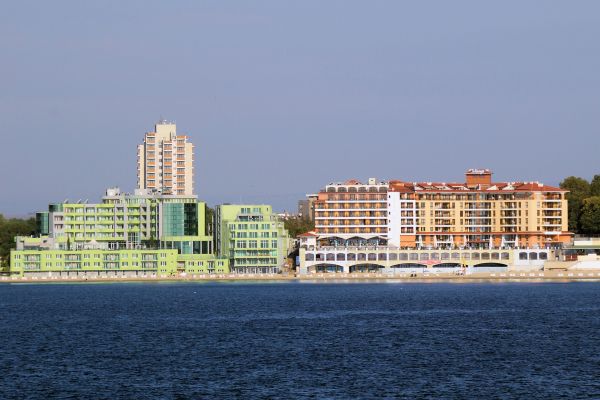 |
| Nesebar is a town of churches. There are about 40 of them. This is the Church of Christ Pantocrator, and it dates to about 1300 (subject to debate). It is very well preserved for a church from the Middle Ages, and it is particularly notable for its decorations, which include rows of green tiles. | 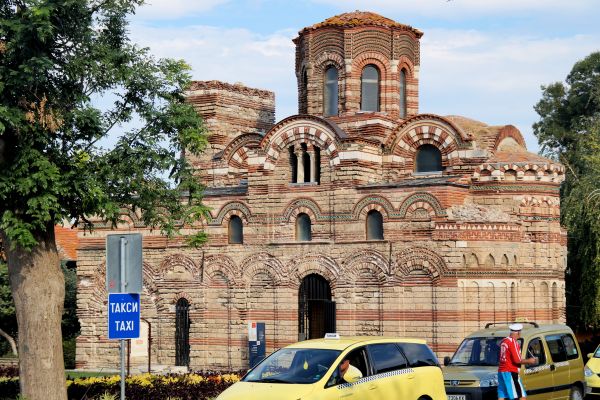 |
| The Church of St. Sophia was built around 500 AD, more or less. It was rebuilt around 900 AD, but the Venetians sacked it in 1257, and moved the relics to San Salvador in Venice. The church was the seat of a bishop at various times in its history, but it was abandoned in the 18th century. | 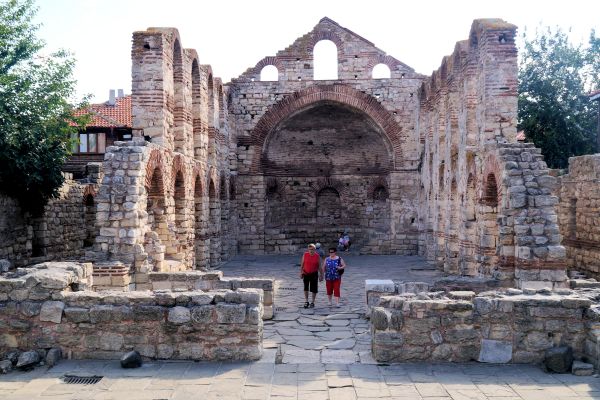 |
| The residential architecture in Nesebar is marked by cantilevered second stories. That is historical. What is less historical is the fact that every facade is devoted to selling something. Even Dubrovnik is less commercial. | 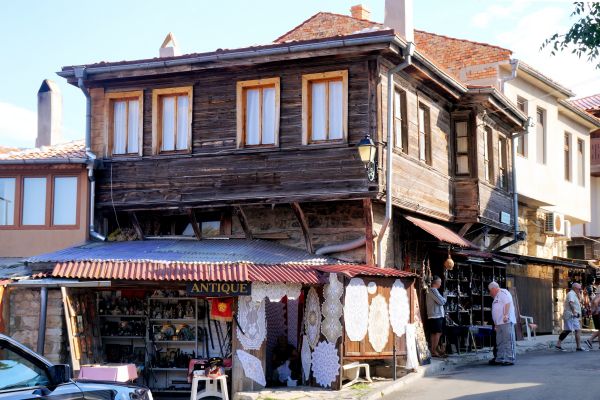 |
| After disembarking in Istanbul, we flew back to Greece, and our friends Mary and Demetris took us to Cape Sounion. Here, it is said, King Aegeus threw himself into the sea because it appeared his son Theseus had been killed by the Minotaur. Theseus lived, but the body of water become the Aegean Sea. | 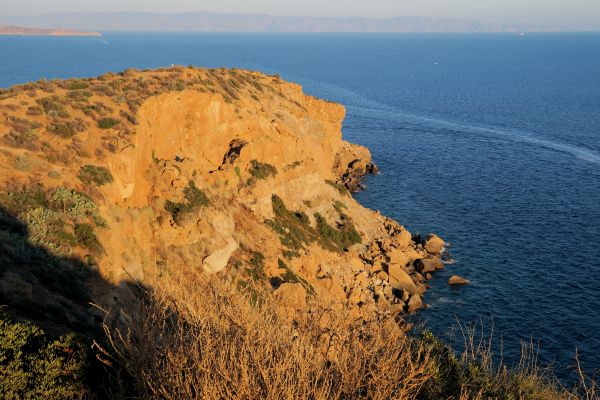 |
| According to Homer, Poseiden inflicted serious travails on Odysseus during his return from sacking Troy. This is the second edition of the Sanctuary of Poseiden, high on Cape Sounion. It dates to about 440 BC, replacing a temple destroyed by Xerxes and the Persians. | 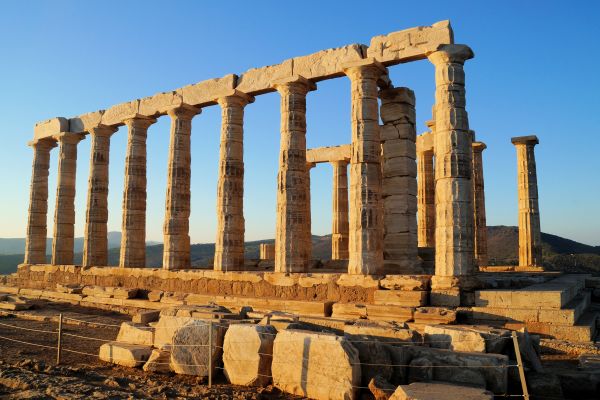 |
| Same temple, but the sun is setting. | 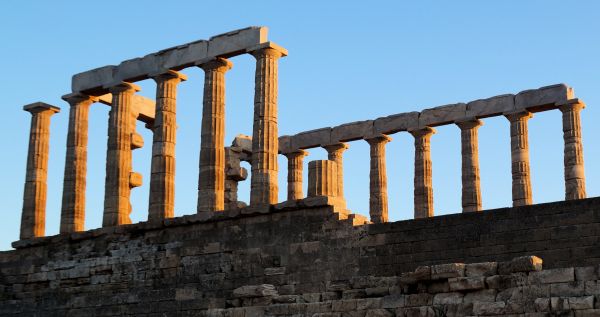 |
| Finally, sunset from Cape Sounion, a scene that brings Athenians out here regularly. | 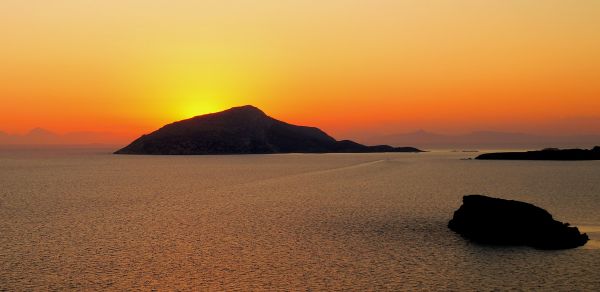 |